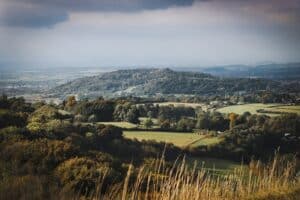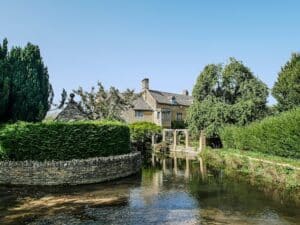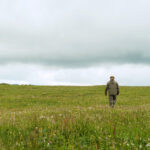The Cotswolds is a region in south-central England, known for its picturesque defining Cotswold features, like rolling hills and quaint market towns. Tourists flock to the area each year to explore the best attractions and take advantage of this beautiful part of the country.
However, there are many hidden gems just waiting to be discovered off the beaten path. In this article, we will discuss some of these unique attractions that give visitors an alternative experience beyond what is offered by more well-known sites.
These lesser-visited locations provide insight into the culture and history of the area, while still offering plenty of fun activities and interesting sights along with them. From ancient monuments to popular trails, uncovering these secret spots can make your trip to the Cotswolds even more memorable than it already would be.
Guests staying at the stunning 18th-century thatched cottage of English Cottage Vacation in Dorset can explore the many wonders of the Cotswolds less than 2 hours drive away if they wish! Our co-host and dedicated chauffeur/guide Nathan will get you wherever you want to be in the executive comfort of our luxury Mercedes van; while co-host and resident chef Laura not only provides delicious meals at the cottage, she’ll even prepare scrumptious gourmet picnics to keep you fueled up for exciting days out!
Let’s dive into the hidden gems of the Cotswolds…
Chedworth Roman Villa
The Cotswolds have some fantastic historic sites of archaeological significance, including Chedworth Roman Villa. Dating back to around 120 CE, this Romano-British villa was discovered over 150 years ago and has since become one of the best-preserved structures of its kind.
It is known for the numerous artefacts that were uncovered during an extensive excavation conducted by the National Trust from 1864 to 1909. At the heart of the site lies a courtyard surrounded by living spaces and storage rooms.
Excavations revealed several pieces of Roman furniture, coins, pottery, and other everyday objects used by people who dwelled here centuries ago. The most significant discovery was a mosaic floor with intricate patterns depicting mythological figures such as Neptune and Oceanus.
This piece is Britain’s finest surviving example of 4th-century pavement art. The excavated area also includes baths, temples and hypocausts providing visitors with unique insights into life at Chedworth Roman Villa during its heyday.
Its archaeological importance has made it an important destination for tourists interested in exploring ancient British history. With its wealth of artefacts, Chedworth Roman Villa offers an exciting glimpse into past civilisations that lived in what is now part of England’s picturesque landscape.
Moving on from this historical landmark, Rollright Stones is another fascinating relic located nearby…
The Rollright Stones
The Rollright Stones are a group of prehistoric monuments located in one of the English counties, Oxfordshire.
These stones are believed to have been in use since the late Neolithic and early Bronze Age periods, around 2500-2000 BCE.
Legends surrounding the Rollright Stones claim that they were created by a king who was turned to stone by a witch.
Additionally, folklore states that the stones are part of a larger complex consisting of a king’s tomb, a king’s stone circle and a queen’s stone circle.
Rollright Stones History
The Rollright Stones have long been an enigmatic source of fascination for people and scholars alike. Situated in the Oxfordshire village of Long Compton, these ancient megaliths consist of three separate stone circles that stand just a few hundred yards from each other: The King’s Men, The King Stone and the Whispering Knights.
Dating back to Neolithic times, these mysterious formations have spurred numerous ancient legends about their origins and meanings. Since time immemorial, stories have circulated about how the stones were formed by either magic or a mass transformation ritual conducted by Merlin himself.
Such tales likely originated with local storytellers keen to explain the mysterious presence of such distinctively large rocks in this otherwise flat landscape. One popular myth speaks of a king who was tricked into turning him and his men into stones, while another claims they were initially soldiers sent on a quest by Mordred but turned to stone after failing to complete it.
Given their history and location, there is little doubt as to why the Rollright Stones remain one of Britain’s most iconic monuments – providing visitors with ample opportunity to explore its mythical past while uncovering some hidden gems along the way.
Rollright Stones Legends
Legend has it that the Rollright Stones were formed through a ritual conducted by Merlin, or alternatively as a result of a wicked spell cast by an unknown witch.
Such myths have been popularised over the centuries and many locals in Long Compton remain convinced that witchcraft was involved in their creation.
Furthermore, Druid history has also been linked to these megaliths due to their mysterious origins and positioning within rural Oxfordshire.
It is believed that Druids may even have used them for religious ceremonies at one point in time.
These legendary accounts continue to fascinate visitors who visit the stones today, providing insight into Britain’s rich mythical past.
Sezincote House And Garden
Sezincote House and Garden is a hidden gem located in the Cotswolds. Set on over 200 acres of land, it showcases a breathtaking mix of Indian Mughal style architecture combined with classic English landscaping. It contains an array of fascinating features:
- A Grade I listed historic mansion dating from 1804;
- An extensive garden designed in the early 19th century;
- Over 10 water features including fountains and canals;
- Around 30 temples, monuments and follies to explore.
The house itself has been lovingly restored to its former glory and includes period furniture, Chinese wallpaper and original plasterwork.
The nine-acre walled garden alone boasts 5500 specimens of plants such as magnolias, camellias, rhododendrons, roses and peonies that have been carefully arranged in exotic designs.
As well as offering guided tours around the property throughout the year, Sezincote also hosts a variety of special events, including outdoor theatre performances and art exhibitions.

Stroud Valleys Heritage Trail
Following the exploration of Sezincote House and Garden, a journey to Stroud Valleys Heritage Trail is in order.
This trail snakes through meadows, woods and Cotswold hills as it follows the course of the River Frome into its source at Coaley Peak. The Hills Foot Trail runs parallel to this path, offering stunning views over Windrush Valley below.
Highlights include Sapperton Tunnel, an impressive feat of Victorian railway engineering; Framilode Lock, an integral part of Britain’s canal heritage; and Dudbridge Locks which are said to be some of the most beautiful locks on either side of the Atlantic Ocean.
The route passes by many Cotswold villages that have been standing since Saxon times including Chalford Hill and Uley. Further along lies Minchinhampton Common where visitors can discover a range of wildlife often seen grazing amongst wildflower meadows or perched atop one of the area’s ancient trees.
There are also opportunities for bird watching with sightings ranging from sparrowhawks and woodpeckers to buzzards and tawny owls.
Stroud Valleys Heritage Trail offers travellers not only amazing views but also insight into England’s history combined with natural beauty at its finest.
With these experiences now under their belt, travellers may wish to continue their off-the-beaten-path Cotswolds adventure by journeying next to Hidcote Manor Garden.
Hidcote Manor Garden
Hidcote Manor Garden is a 20th-century English garden located in the Cotswolds of Gloucestershire.
It was designed by the renowned horticulturist Lawrence Johnston and is known as one of the most influential gardens of the 20th century.
The garden is divided into several distinct garden rooms, each with its own layout and design.
The landscaped gardens feature a variety of planting schemes, with a large range of shrubs, trees, and flowering plants.
The garden also has a variety of structures, including terraces, pergolas, and ponds.
History Of Hidcote Manor Garden
Hidcote Manor Garden is a National Trust property located in the Cotswold hills of Gloucestershire, England.
The garden was created and developed by renowned horticulturist Lawrence Johnston over a period of more than forty years.
It features ancient artefacts such as stone walls and terraces that have been around since the 17th century, as well as various horticultural practices including topiary, herbaceous borders, and water gardens.
Due to its rich history and unique design elements, it has become one of the most visited tourist attractions in the Cotswolds region.
Visitors can explore this tranquil estate filled with beautiful flower beds and lush green lawns surrounded by centuries-old trees providing an escape from everyday life.
There are also plenty of activities for all the family to take part in such as guided tours, tea room visits and art exhibitions, among others.
Hidcote is an area of outstanding natural beauty that offers visitors an unforgettable experience full of wonders waiting to be discovered.
Landscaped Gardens
The landscaped gardens at Hidcote Manor Garden are a popular attraction for visitors of all ages.
The grounds feature winding country paths, old wool churches and ancient stone walls that have been part of the landscape since the 17th century.
Visitors can take beautiful walks around the property or relax in one of the many charming seating areas to enjoy the breathtaking views.
There is also an abundance of flora with vibrant flower beds, herbaceous borders and topiary which makes this garden an ideal spot for nature lovers seeking a tranquil escape from city life.
With its variety of attractions and activities, Hidcote Manor Garden provides something for everyone to enjoy and create lasting memories.

The Cotswolds: Final Word
The Cotswold region is an area of outstanding natural beauty, and its off-the-beaten-path attractions offer visitors an opportunity to explore the area in a unique way.
From the ancient Roman villa at Chedworth, to The Rollright Stones and Hidcote Manor Garden, there are hidden gems to discover across this picturesque landscape. Visitors can also enjoy beautiful walks on the stunning Stroud Valleys Heritage Trail.
While it might be argued that these lesser-known attractions lack some of the grandeur of more famous sites, they provide a deeper insight into the history and culture of this beautiful region.
And what could be a better way of exploring the Cotswolds area than doing it from one of the many beautiful thatched cottages? Like English Cottage Vacation’s enchanting 18th-century thatched cottage? No need to worry about meals or public transport, Laura and Nathan have that covered! Reach out today to book your all-inclusive, luxury cottage holiday in the heart of the beautiful countryside and let the adventures begin!





